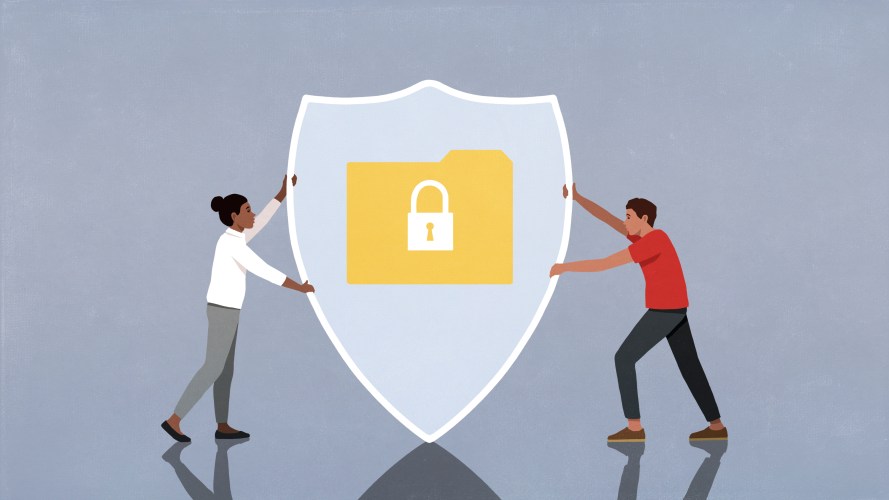3 Steps You Can Take for Sustainable IT

New research shows that 73% of IT leaders are concerned about climate change. Here’s how IT can charge a path to sustainability.

Asa Murphy
According to our latest State of IT report, 73% of IT leaders are concerned about the impact of climate change. IT has good cause to be concerned: enterprise technology is responsible for approximately 1% of global greenhouse gas emissions. This may not sound like much, but it is equal to the total carbon emitted by the U.K. So how can sustainable IT impact a company’s digital carbon footprint?
Before we dig into that, it’s important to understand the ways IT and technology contribute to our changing climate.
What’s on the minds of IT leaders?
Keep your finger on the pulse with our newest State of IT report. We surveyed more than 4,000 IT leaders around the world about current trends and what’s coming next.



IT’s role in greenhouse gas emissions
Climate scientists recently confirmed that July 2023 was the hottest month recorded in human history. While energy production and agriculture produce most of the greenhouse gas worldwide, industry is a close third. We found that energy consumption from information and communication technologies is expected to account for 14% of the world’s carbon footprint by 2040.
Here are some of the ways technology impacts the planet, and why sustainable IT is becoming a mandate for CIOs.
- Data centers: Data centers need electricity to run and both electricity and water to stay cool. With more of the world’s data moving to the cloud, data centers have become bigger consumers of these natural resources. And let’s not forget AI algorithms: they can help with fraud detection, autonomous driving, and even cancer screening — but they also consume extra computing power, which means more servers, cooling, and electricity.
- End-user devices: Computers, smartphones, printers, and other devices are responsible for a big chunk of the total enterprise technology emissions. Demand for devices increased dramatically since COVID-19 and drove many of us to set up home offices. Remember too, that these devices get replaced much more frequently than servers. And of course, it’s not just the usage itself. The full supply chain, including raw material acquisition, manufacturing, packaging, and transportation are big contributors to GHG emissions.
- E-waste: What happens to the millions of electronic devices produced each year? Unless recycled, they get thrown away and replaced. E-waste includes not just computers and monitors, but also cell phones, radios, and LCD and plasma TVs. Only 17% of e-waste gets recycled. The rest, often with hazardous materials such as lead, ends up in landfills. The U.S. alone is responsible for millions of tons of e-waste each year.
- Rare earth minerals: Hard drives in computers and servers use rare earth minerals. We can’t forget the environmental risks involved in their mining, refining, and disposal, or the obvious risk of their extinction. In the U.S., both the government and the Environmental Protection Agency want to increase recycling for rare earth minerals.
How can you build sustainable IT practices? Below are three steps CIOs and IT executives can take to reduce their company’s digital carbon footprint.
Three steps to sustainable IT and a reduced digital carbon footprint
IT leaders and their business counterparts have a mandate for bold climate action. Not only is it necessary for our planet, it makes good business sense. Consumers are more likely to purchase from companies that stand up for environmental and social causes.
How can IT leaders carve a path to sustainable IT? The three steps below can help.
1. Track carbon emissions throughout the value chain
Most large companies now have sustainability goals and plans to reduce their carbon footprint. But you can’t reduce what you can’t track. So if your company doesn’t have clear sustainability goals in place yet, the place to start is tracking.
For IT this means understanding the scope of the company’s digital footprint, and ensuring that the emissions associated with hardware manufacturing and supply chain, software production, data center power consumption, cloud computing, and edge computing are accounted for. IT leaders usually work alongside their environmental, social, and corporate governance teams to frame an ESG reporting strategy.
A number of solutions will help companies track, including a calculator from the Environmental Protection Agency (EPA) for small businesses. But for larger companies, you may need a more robust sustainability management tool.
What about global standards for tracking and disclosures, you ask? Earlier this year, the International Sustainability Standards Board launched the first global standards for public companies. With growing regulation and disclosure requirements around the world, this is a critical moment to account for your carbon footprint across the value chain.
Tracking will drive corporate sustainability disclosures and give you the information you need to make decisions that will reduce your carbon footprint. When deciding what to track, make sure to include:
- In-house servers and associated infrastructure
- Electricity, heating, and cooling used to run server facilities
- Direct emissions from vehicles or other equipment you own and use for your server facilities
- End-user devices (laptops, cellphones, printers, etc.) in the office and in remote work locations globally
- All IT business travel
2. Set defined reduction goals and follow through with reduction plans
According to the State of IT, 79% of IT leaders say their organizations have set greenhouse emission reduction goals. Consumers, on the other hand, may not be convinced that businesses are making enough investments in sustainability. A 2021 survey found that only 42% of consumers believe that companies are investing enough resources to fight climate change.
There is an opportunity lost here. Not just for the environment, but because sustainable business practices often result in lower costs.
What does an emissions reduction plan look like? Here’s what some companies are doing for sustainable IT:
- Partnering with suppliers who have clear and transparent sustainability goals
- Using automation, the abundance of data, and advanced analytics for smarter IT operations
- Procuring IT accessories made from recycled materials
- Identifying and decommissioning underutilized systems
- Migrating storage to more energy efficient alternatives
- Procuring IT hardware from suppliers who provide environmental product declarations
- Reducing landfill waste by expanding the life of IT devices
- Implementing sustainable software development practices, including:
- Participating in the new “Green Code” initiative
- Using the Software Carbon Intensity metric to measure, benchmark, and reduce the greenhouse emissions that come from coding
- Extending the end-of-life for computing devices
- Avoiding the purchase of waste: items that can’t be fully reused or recycled at the end of their life
- Partnering with cloud vendors with a green cloud architecture and sustainability goals
3. Create and promote a culture of sustainability
For IT to succeed on a path to sustainability and help reduce a company’s digital carbon footprint, IT leaders need to connect their mission to their companies’ wider sustainability agenda. CIOs, chief digital officers (CDOs), and other IT leaders have the opportunity to motivate other executives and their boards, and lead their IT teams through emissions reductions.
Here are some ways to promote a culture of sustainability:
- Incorporate sustainability goals and metrics in IT and executive performance scores
- Encourage your team to use fewer devices to reduce e-waste
- Prolong the use and life of employees’ devices
- Build “GreenOps” strategies into your team’s plans
- Talk to your teams about sustainable software development and the steps you are taking for sustainable IT
Implementing sustainable IT goals isn’t easy. Take a methodical approach and put a plan in place to track IT emissions. Once that’s done, work with your company’s environmental, social and governance team to build a reduction plan with clear goals — and most importantly, put in the work to achieve them. Share your action plans with other executives and your teams, and promote a culture of sustainability.
Besides the obvious impact on the environment, sustainability makes good business sense.
Stay ahead of IT trends
What are IT innovators saying about sustainability and other important topics? Find out today in our latest State of IT report, packed with insights from thousands of industry leaders.






























